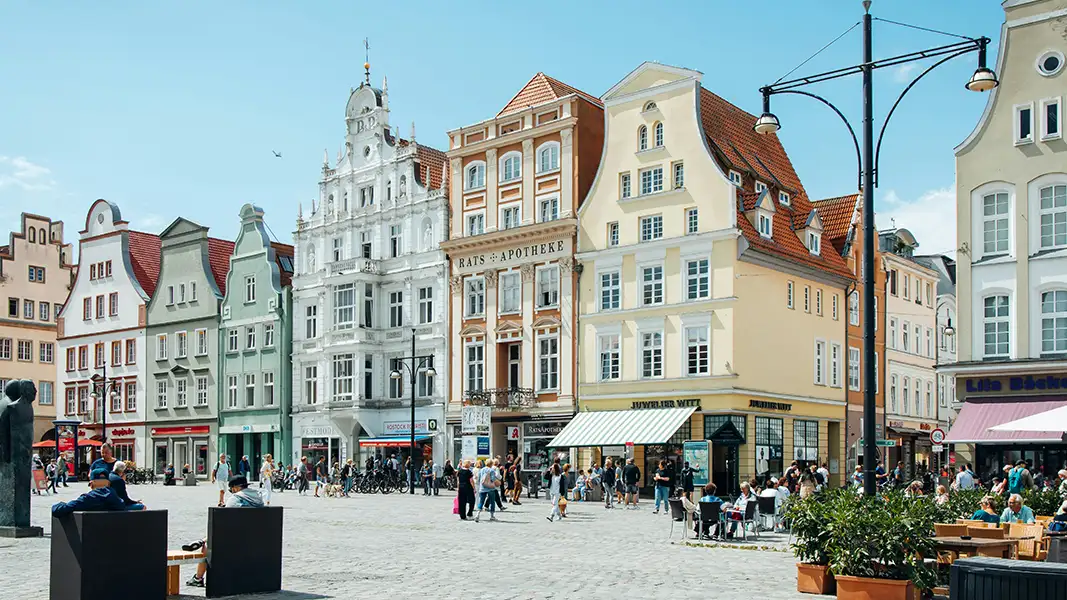Gedser - Rostock
Ferries to Germany
Gedser - Rostock
Ferries to Germany

The Gedser Rostock ferry route connects Denmark with Germany. Currently there is just the 1 ferry company operating this ferry service, Scandlines. The crossing operates up to 63 times each week with sailing durations from around 2 hours.
Gedser Rostock sailing durations and frequency may vary from season to season so we’d advise doing a live check to get the most up to date information.
More routes than anyone else.

Compare fares, times & routes in one place.
Change plans easily with flexi tickets.

Book e-tickets & manage trips in-app.
Live ship tracking & real-time updates.

Top-rated customer support when you need it.
The port-town of Gedser can boast to be the southernmost town in Denmark, with the small community sitting on the very tip of the curved peninsula that marks the bottom of Falster island. The area is blessed with bucolic beauty. Meadows and farmland stretch towards the horizon in flat swathes of rich greens and browns and the quiet downtown streets are shadowed by the leafy boughs of alder trees. The port is found at the western edge of town in a manmade inlet of the Baltic Sea sheltered by two, arcing sea-barriers. It is a small facility that consists of nothing more than a few piers and a small shipyard. The ferry terminal is a red-brick building located on the largest of these piers, at the far end of a road that leads directly from the centre of town to the car-park outside the ticket office. Those driving to the port can travel south along the Gedser Landevej road that traces the western edge of the isle. This route feeds into the major E47 motorway that connects Gedser to the capital city of Copenhagen just over 60 miles away. Buses regular run from the terminal outside the port too, taking passengers to the larger city of Nykøbing Falster found along the banks of the narrow Guldborg Sund waterway. One ferry service currently operates from Gedser. A Scandlines service makes the short trip over to the town of Rostock on the north-eastern shores of Germany multiple times throughout the day. It’s a route that whisks passengers across a thin section of the chilly Baltic Sea and past the golden statue of Esperanza, a woman who is said to bring hope to those arriving on the German coast.
Rostock is a city in northern Germany located on the Warnow river on the coast of the Baltic Sea. In the 11th century there was a Slavic settlement at the Warnow river called Roztoc (which means broadening of a river); the name Rostock is derived from that designation. The Danish king Valdemar I set the town aflame in 1161. Afterwards the place was settled by German traders. The rise of the city began with its membership in the Hanseatic League. In the 14th century it was a powerful seaport town with 12,000 inhabitants and the biggest city of Mecklenburg. Ships for cruising the Baltic Sea were constructed in Rostock. In 1419 the oldest university in Northern Europe, the University of Rostock, was founded. Large parts of the central city were destroyed in World War II by Allied bombings in 1942 and 1945. Through reconstruction and subsequent extension, the city became a major industrial centre of the German Democratic Republic.